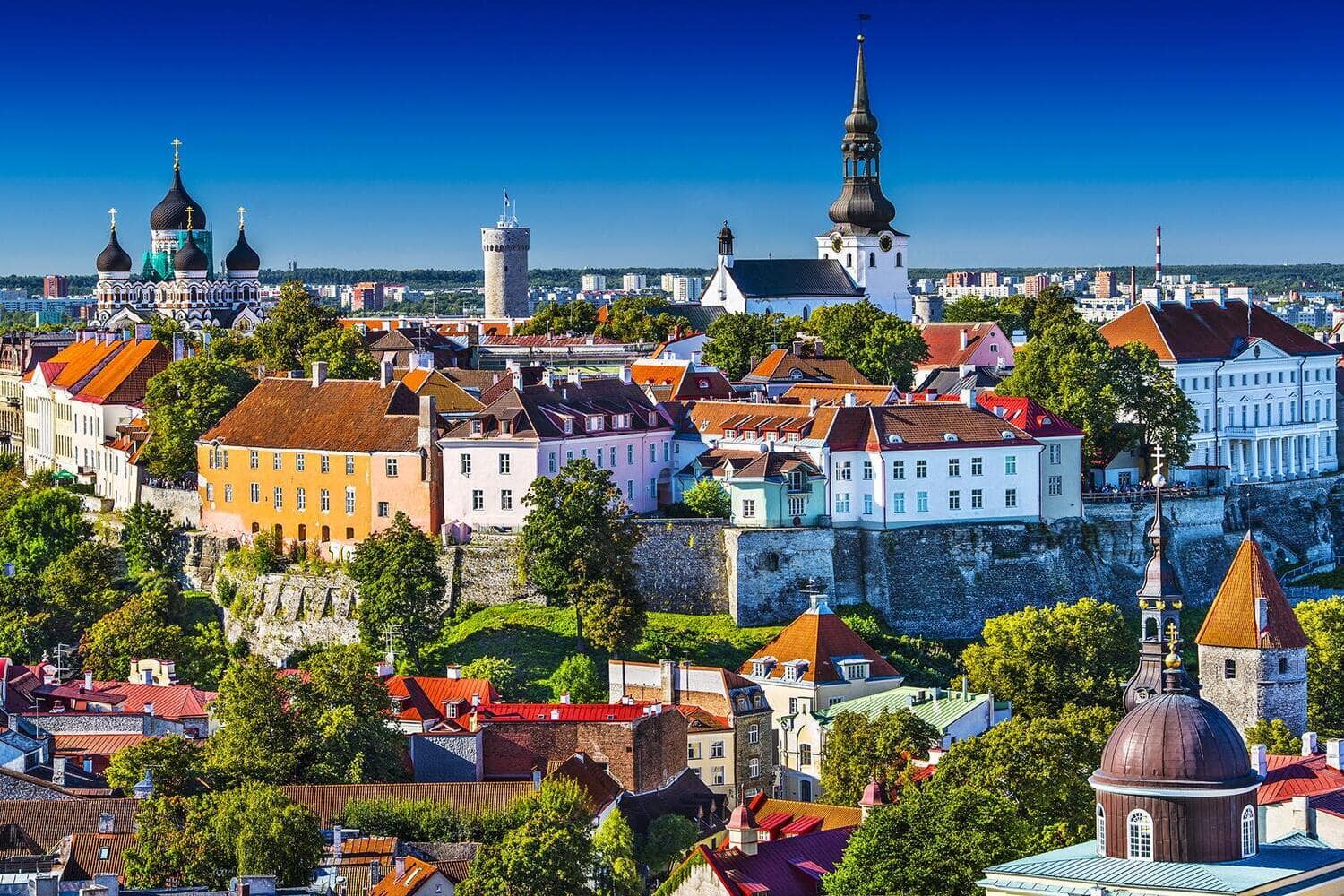Tallinn is a city that captivates visitors with its medieval charm, cutting-edge digital innovation, and rich historical legacy. The capital of Estonia masterfully blends the old with the new: cobblestone streets lead to ancient towers and walls, while nearby you’ll find one of the world’s most advanced digital governance systems. You might not know that Tallinn is one of the best-preserved medieval cities in Europe and, at the same time, one of the most technologically advanced cities globally. It’s a destination full of surprises, ready to impress even the most seasoned travelers. Below are some fascinating and educational facts that reveal the many layers of this unique city.
- The name Tallinn likely derives from an old Estonian phrase meaning “Danish town” or “Danish fortress.” This refers to the Danish conquest of the city during the Northern Crusades in the 13th century.
- The first written mention of Tallinn dates back to 1219, although settlements existed on the site much earlier. In 1248, the city was granted town rights under Lübeck law, fostering the development of trade.
- Tallinn’s Old Town is listed as a UNESCO World Heritage Site. It features an abundance of medieval buildings, including the city wall, towers, and the town hall — the oldest continuously functioning town hall in Northern Europe.
- The city’s defensive wall is the best-preserved in all of the Baltic countries. It stretches over 2 kilometers, and several of its towers are open to visitors.
- During the Middle Ages, Tallinn was a significant trading hub in the Hanseatic League. It maintained close economic ties with other northern European port cities.
- Raeapteek, located on the Town Hall Square, is one of the oldest continuously operating pharmacies in Europe, dating back to 1422. It remains a functioning pharmacy and a popular tourist attraction.
- Tallinn is known as one of the world’s most digitally advanced cities. Residents can vote online, and most public services are accessible via a centralized digital platform.
- Estonia, with Tallinn at the forefront, was one of the first countries to introduce e-residency. This allows entrepreneurs worldwide to establish and run a business within the European Union remotely.
- The world-famous communication platform Skype was developed in Tallinn. This innovation helped put Estonia on the global tech map.
- Each year, the city hosts the Old Town Days festival, featuring medieval costumes, knights’ tournaments, open-air markets, and concerts. It brings the historic streets to life with vibrant cultural events.
- St. Olaf’s Church was considered the tallest building in the world in the 16th century. Its spire once reached over 150 meters and served as a maritime navigation point.
- Tallinn boasts several scenic viewpoints offering breathtaking panoramas of red-tiled rooftops, gothic spires, and the Baltic Sea. These spots are favorites among photographers and visitors.
- The city played a vital role in Estonia’s “Singing Revolution,” a peaceful independence movement in the late 1980s. Massive choral gatherings in Tallinn were a defining part of the nation’s path to freedom.
- Public transportation is free for all registered residents of Tallinn. This policy promotes sustainability, reduces traffic congestion, and improves quality of life.
- Located just outside the city, the Tallinn TV Tower stands 314 meters tall and was built for the 1980 Moscow Olympics. From its observation deck, you can enjoy sweeping views of the city and the Gulf of Finland.
- Parts of Tallinn’s unique medieval sewage system are still preserved and accessible in the underground museum. It is a fascinating example of early engineering.
- The Estonian Open Air Museum in Rocca al Mare recreates traditional village life. Visitors can explore wooden farmhouses, windmills, churches, and even participate in folk crafts.
- Throughout history, Tallinn was ruled by Denmark, Sweden, the Russian Empire, and the Soviet Union. This contributed to the city’s multicultural and multiethnic character.
- Soviet-era architecture is still visible in parts of the city, including buildings like the Palace of Culture. These stark structures contrast sharply with the gothic and baroque styles of the Old Town.
- Tallinn’s coastline is popular in summer for its sandy beaches, seaside promenades, and scenic sunsets. It is a favorite getaway spot for both locals and tourists.
Tallinn is a city where history comes alive around every corner, and the future arrives faster than anywhere else. These interesting facts show just how dynamic and surprising Estonia’s capital truly is. It’s a place where medieval fortresses stand alongside digital startups, and old legends coexist with innovation. If you haven’t visited Tallinn yet — perhaps now is the perfect time to discover it for yourself.





